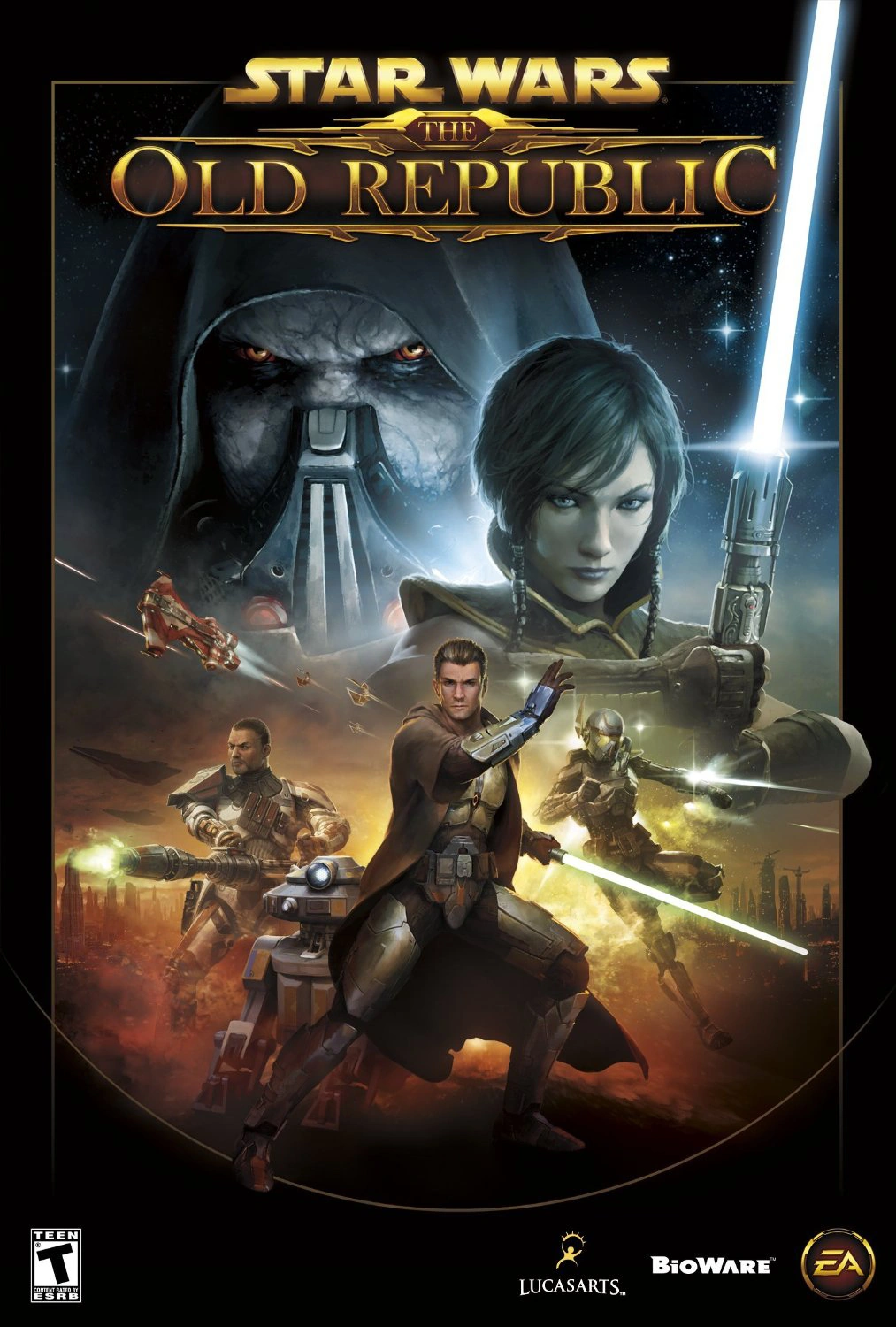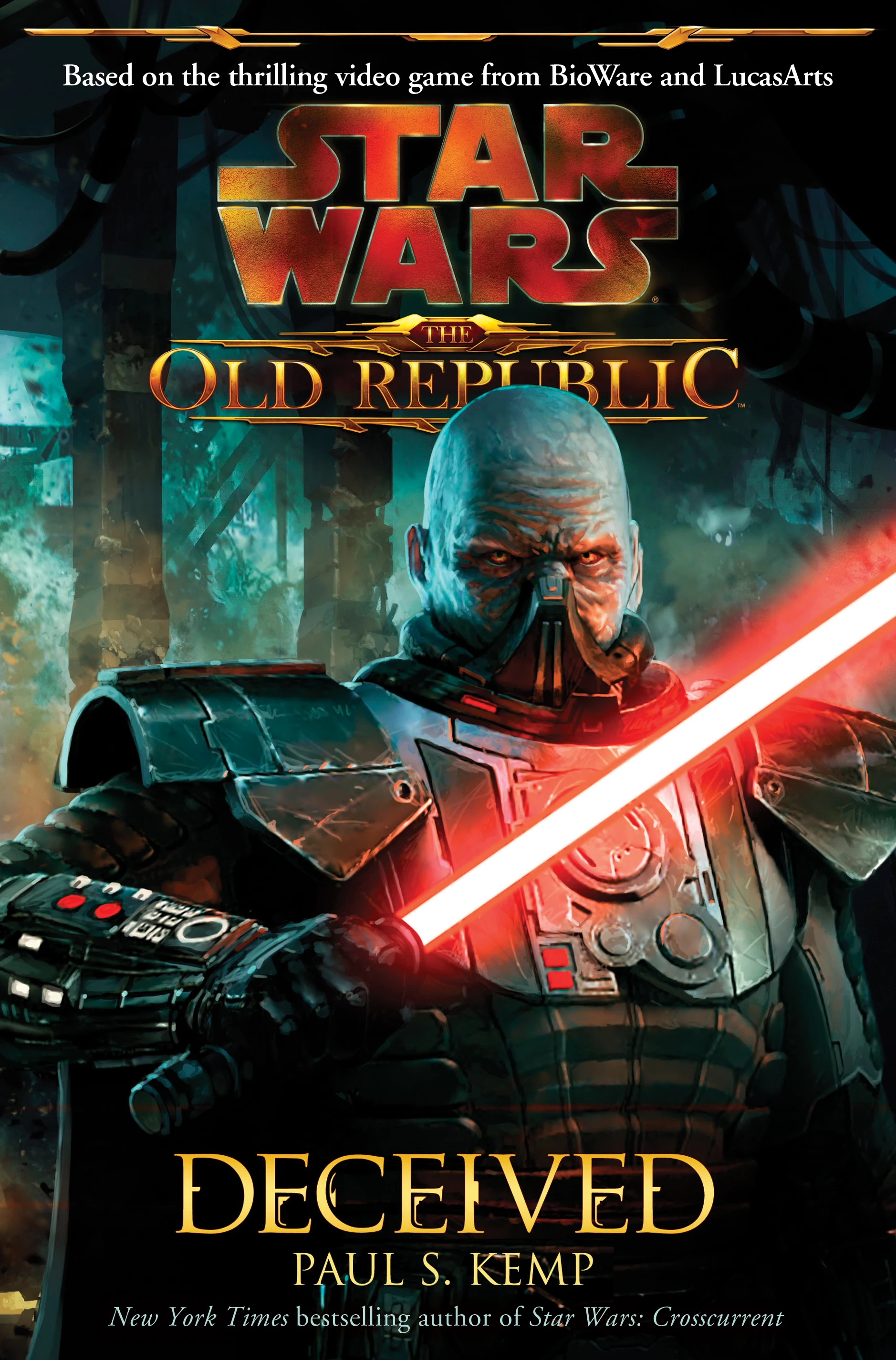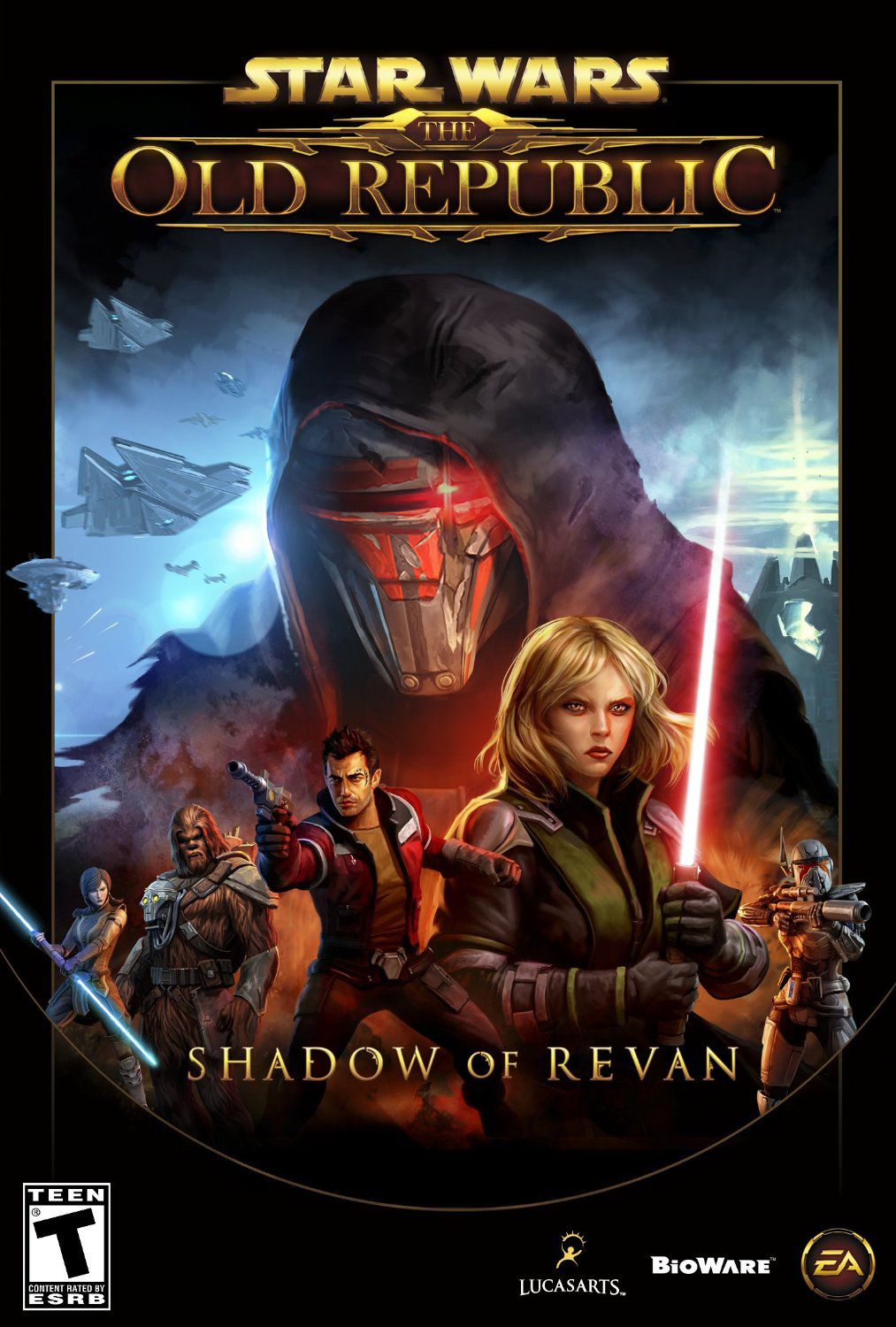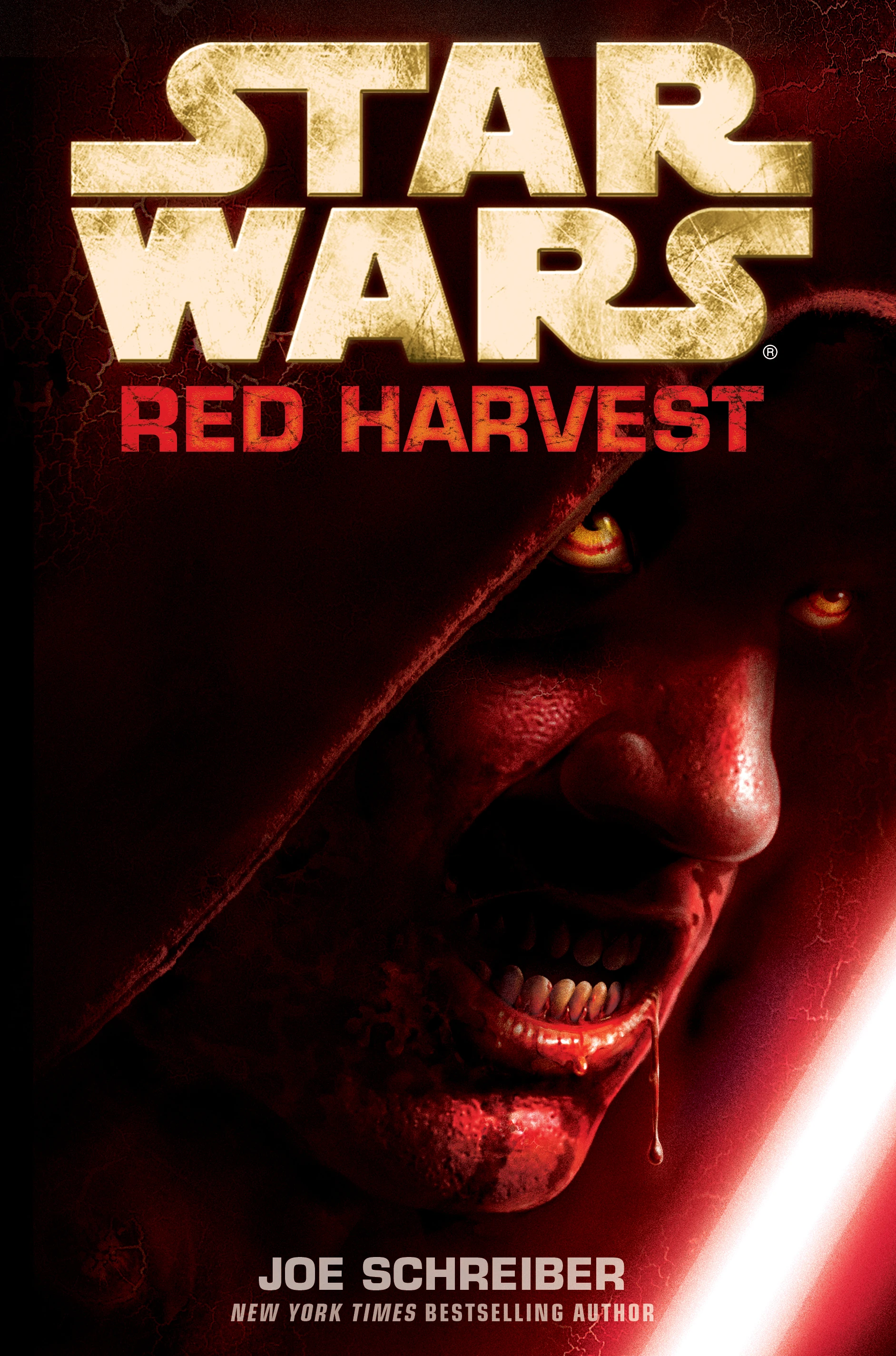I have reached a very large multimedia project in my Star Wars Legends Readthrough: The Old Republic. These stories were centered around a video game of the same name, but included numerous novels and comics as well, mostly set beforehand.
I'll be discussing a total of twelve titles here:
After ten years of cold war, hostilities between the Republic and Empire begin anew, but the two sides must work together to stop other forces like the Dread Lords, the Revanites, and Valkorion's Eternal Empire.
Revan tells a story connecting the Knights of the Old Republic games with this era. Revan, the protagonist of the first game, tries to fill in gaps in his memory, only to become the prisoner of the immortal Sith Emperor. We also get backstory on the Emperor, and how he conquered death.
Issues 4-6 of the comic present the backstories of some of the game's non-player characters, especially Darth Thanaton. It also continues to establish the lore of the Emperor, and his ability to speak through others.
Deceived and the first three issues of the comic tell the story of the Sacking of Coruscant. The Sith Empire makes a surprise attack on Coruscant, destroying the Jedi Temple and holding the planet hostage during peace negotiations. This allows the Sith to ensure the peace treaty favours them considerably, but it infuriates many on both sides, including Darth Malgus, who would go on to found a breakout Empire. These events were also depicted in the game's first trailer, also called Deceived.
Fatal Alliance, Red Harvest (which did not have The Old Republic branding but is set in this time period), and The Lost Suns all take place during the cold war between the Republic and the Empire. The Jedi are no longer welcome in much of the Republic, and so rebuild their temple on their ancient homeworld of Tython (see: Dawn of the Jedi). The Sith are proud of their victory, but crave war. There are many battles between light and dark, though the governments remain at peace.
The video game starts at the tale end of the cold war. Hostilities between Republic and Empire resume during the game, and follows through Annihilation, Rise of the Hutt Cartel, and Shadow of Revan. The Sith Emperor is killed during the Jedi Knight class story, though Revan, who survived since his first encounter with the Emperor centuries earlier, tries to resurrect him in order to permanently kill him. Sensing a greater threat to life in the Galaxy, Republic spy Theron Shan and Sith Lord Lana Beniko help the player character fight for the greater good against both Revan and the Emperor (the former is defeated, while the latter gathers enough strength to retreat.)
In Knights of the Fallen Empire and Knights of the Eternal Throne, Jedi and Sith, Republic and Empire must unite to defeat a common foe. The Sith Emperor, cast out during Shadow of Revan, has taken the name Valkorion and built a new Eternal Empire in Wild Space. He invades Sith and Republic space. His body is killed by his son Arcann, but his spirit lives on in the mind of the player character, who puts a team together composed of Republic, Imperial, and underworld characters to stop the Eternal Empire. In Knights of the Eternal Throne, the player's alliance must continue to rebuild and combat the new empress of the Eternal Empire, Arcann's sociopathic sister Vaylin.
The end of this story has not yet been written. We still do not know how the status quo of the Galaxy, with a Republic in power and no Sith Empire to threaten it until close to two millennia later, is finally restored.
I love these stories of ancient conflict between the Jedi and the Sith. Unlike in Dawn of the Jedi, the Republic and Jedi Order we see in these comics seem familiar. They are clearly not the same entities from the later films, but they are similar in a lot of important ways. The Empire is a new organization, but you can see how it influenced Palpatine's Empire in the original films.
What makes this era special is the unique setting at the beginning of the game. The Republic with its Jedi and the Empire with its Sith are about the same strength. They are in a state of Cold War. Skirmishes between Republic and Imperial forces, or between Jedi Knights and Sith Lords, happen throughout the Galaxy, but they are not at war. Both governments try to influence neutral systems, sometimes illegally. The player character finds themselves on either Tython (Jedi Temple), Korriban (Sith Academy), Ord Mantell or Hutta (neutral worlds with Republic or Imperial leanings), and will face off against forces of the opposing side. The Empire tries to disrupt the reconstruction of Taris, while Republic soldiers arm rebels on Empire-held Balmorra. Both sides have visible presences on Tatooine and Alderaan. War officially breaks out midway through the game, and all parties fight openly on Quesh, Belsavis, Hoth, Corellia, and other worlds.
You could easily set any number of stories in this setting, and have it be interesting. Take for instance the novel Red Harvest, which is a zombie horror novel set on a Sith Academy world and involving the work of a Sith alchemist (this novel was a prequel to Joe Schreiber's first Star Wars zombie horror, Death Troopers). Many short stories, which are hard to find if you don't buy the Star Wars Insider magazines, tell individual tales of Sith Lords, Republic troopers, or smugglers in this unique setting.
I understand that any Star Wars setting could be described this way. But the era of The Old Republic is the best developed Star Wars environment outside the movies.
I love the designs and descriptions of a lot of the locations we visit in The Old Republic. Planets from the movies, like Tatooine, Hoth, Coruscant, and Yavin 4 are consistent with what we've seen in the movies. Other worlds that are new or only seen in other EU materials are well designed and aesthetically pleasing ("rocky" is a common look, which I think makes the environments look pretty).
I did have problems with some of the earliest media published, especially the first arc of the comic (Threat of Peace). These comics were first published as webcomics well before decisions were taken on the game's final look. As a result, characters, ships, and locations look quite different than they look in the game. Consider Satele Shan. She is described in Threat of Peace as being an apprentice and looks quite young, maybe early 20s. The game developers later decided she was the Grand Master of the Jedi Order, depicting her as a Padawan learner decades earlier at the start of the war. The Satele Shan we see in the game is in her fifties or sixties. Furthermore, the Imperial ships attacking Coruscant also look absolutely nothing like the ones we see in the Deceived trailer or the final game. I understand the importance of building anticipation for the game and having media available like comics and trailers, but basing appearances on concept art or designs that are not final results in inconsistencies that I would prefer not exist.
I also like how this is the only story in the Legends timeline that is still being created. I mentioned that a satisfying conclusion has not yet been reached to this story. The latest expansion, Knights of the Eternal Throne, has concluded but is likely not the final chapter. New missions are being added but a full expansion will likely be needed to end the story. While it remains profitable, new content will continue to be produced for this game. I look forward to seeing how it will eventually end.
And I would be remiss without noting that the game is fun. It is designed to be a multiplayer game, but the stories are compelling enough to allow for one person to enjoy it alone. The stories of Knights of the Fallen Empire and Knights of the Eternal Throne in particular look like a lot of fun; closely resembling a cohesive single-player game rather than an open multiplayer game. I am looking forward to bringing my newest character through her class story and into the endgame.
I will also be taking breaks from the regular readthrough to read new novels. My next post will be a comprehensive list of all the books I plan to read and how I intend to break them up into digestible pieces.
Follow @C_Andrew_H
 |
| Game cover of Star Wars: The Old Republic. Image from Wookieepedia. |
I'll be discussing a total of twelve titles here:
- The Old Republic: Revan (novel by Drew Karpyshyn, 2011)
- The Old Republic 1-6 (comic by Robert Chestney and Alexander Freed, 2009-2010)
- The Old Republic: Deceived (novel by Paul S. Kemp, 2011)
- Red Harvest (novel by Joe Schreiber, 2010)
- The Old Republic: Fatal Alliance (novel by Sean Williams, 2010)
- The Old Republic: The Lost Suns 1-5 (comic by Alexander Freed, 2011)
- The Old Republic (video game by BioWare, 2011)
- The Old Republic: Rise of the Hutt Cartel (video game expansion by BioWare, 2013)
- The Old Republic: Annihilation (novel by Drew Karpyshyn, 2011)
- The Old Republic: Shadow of Revan (video game expansion by BioWare, 2014)
- The Old Republic: Knights of the Fallen Empire (video game expansion by BioWare, 2015-2016)
- The Old Republic: Knights of the Eternal Throne (video game expansion by BioWare, 2016-2017)
The comics were all published by Dark Horse Comics and the novels by Del Rey. I read the eleven comics as issues, and hardcover editions of the five novels.
For the video game, I completed the main storyline with a Sith Warrior, and completed the main story, Rise of the Hutt Cartel, and Shadow of Revan with a Sith Inquisitor. Most recently, I've been playing with a Jedi Knight, though at time of writing I've only just finishing Part 1 of the class quest.
I also watched Let's Play videos so that I could experience Knights of the Fallen Empire and Knights of the Eternal Throne.
For the video game, I completed the main storyline with a Sith Warrior, and completed the main story, Rise of the Hutt Cartel, and Shadow of Revan with a Sith Inquisitor. Most recently, I've been playing with a Jedi Knight, though at time of writing I've only just finishing Part 1 of the class quest.
I also watched Let's Play videos so that I could experience Knights of the Fallen Empire and Knights of the Eternal Throne.
Story:
The Old Republic is the story of a great war between the Republic and the Sith Empire. This version of the Sith Empire was made up of survivors of the Great Hyperspace War (see my write-up on Tales of the Jedi for more information). After 1,300 years in the shadows, the Sith re-emerge and wage war against the Republic. This conflict culminates in an attack on the capital world of Coruscant, which the Sith hold just long enough to ensure that the terms of a peace treaty are in their favour.After ten years of cold war, hostilities between the Republic and Empire begin anew, but the two sides must work together to stop other forces like the Dread Lords, the Revanites, and Valkorion's Eternal Empire.
Revan tells a story connecting the Knights of the Old Republic games with this era. Revan, the protagonist of the first game, tries to fill in gaps in his memory, only to become the prisoner of the immortal Sith Emperor. We also get backstory on the Emperor, and how he conquered death.
Issues 4-6 of the comic present the backstories of some of the game's non-player characters, especially Darth Thanaton. It also continues to establish the lore of the Emperor, and his ability to speak through others.
Deceived and the first three issues of the comic tell the story of the Sacking of Coruscant. The Sith Empire makes a surprise attack on Coruscant, destroying the Jedi Temple and holding the planet hostage during peace negotiations. This allows the Sith to ensure the peace treaty favours them considerably, but it infuriates many on both sides, including Darth Malgus, who would go on to found a breakout Empire. These events were also depicted in the game's first trailer, also called Deceived.
 |
| Darth Malgus on the cover of Deceived. Image from Wookieepedia. |
Fatal Alliance, Red Harvest (which did not have The Old Republic branding but is set in this time period), and The Lost Suns all take place during the cold war between the Republic and the Empire. The Jedi are no longer welcome in much of the Republic, and so rebuild their temple on their ancient homeworld of Tython (see: Dawn of the Jedi). The Sith are proud of their victory, but crave war. There are many battles between light and dark, though the governments remain at peace.
The video game starts at the tale end of the cold war. Hostilities between Republic and Empire resume during the game, and follows through Annihilation, Rise of the Hutt Cartel, and Shadow of Revan. The Sith Emperor is killed during the Jedi Knight class story, though Revan, who survived since his first encounter with the Emperor centuries earlier, tries to resurrect him in order to permanently kill him. Sensing a greater threat to life in the Galaxy, Republic spy Theron Shan and Sith Lord Lana Beniko help the player character fight for the greater good against both Revan and the Emperor (the former is defeated, while the latter gathers enough strength to retreat.)
 |
| Revan and the other main characters, including Theron Shan and Lana Beniko, on the promotional poster for Shadow of Revan. Image from Wookieepedia. |
In Knights of the Fallen Empire and Knights of the Eternal Throne, Jedi and Sith, Republic and Empire must unite to defeat a common foe. The Sith Emperor, cast out during Shadow of Revan, has taken the name Valkorion and built a new Eternal Empire in Wild Space. He invades Sith and Republic space. His body is killed by his son Arcann, but his spirit lives on in the mind of the player character, who puts a team together composed of Republic, Imperial, and underworld characters to stop the Eternal Empire. In Knights of the Eternal Throne, the player's alliance must continue to rebuild and combat the new empress of the Eternal Empire, Arcann's sociopathic sister Vaylin.
The end of this story has not yet been written. We still do not know how the status quo of the Galaxy, with a Republic in power and no Sith Empire to threaten it until close to two millennia later, is finally restored.
Thoughts:
What makes this era special is the unique setting at the beginning of the game. The Republic with its Jedi and the Empire with its Sith are about the same strength. They are in a state of Cold War. Skirmishes between Republic and Imperial forces, or between Jedi Knights and Sith Lords, happen throughout the Galaxy, but they are not at war. Both governments try to influence neutral systems, sometimes illegally. The player character finds themselves on either Tython (Jedi Temple), Korriban (Sith Academy), Ord Mantell or Hutta (neutral worlds with Republic or Imperial leanings), and will face off against forces of the opposing side. The Empire tries to disrupt the reconstruction of Taris, while Republic soldiers arm rebels on Empire-held Balmorra. Both sides have visible presences on Tatooine and Alderaan. War officially breaks out midway through the game, and all parties fight openly on Quesh, Belsavis, Hoth, Corellia, and other worlds.
You could easily set any number of stories in this setting, and have it be interesting. Take for instance the novel Red Harvest, which is a zombie horror novel set on a Sith Academy world and involving the work of a Sith alchemist (this novel was a prequel to Joe Schreiber's first Star Wars zombie horror, Death Troopers). Many short stories, which are hard to find if you don't buy the Star Wars Insider magazines, tell individual tales of Sith Lords, Republic troopers, or smugglers in this unique setting.
 |
| Cover of horror novel Red Harvest, set during The Old Republic. Image from Wookieepedia. |
I love the designs and descriptions of a lot of the locations we visit in The Old Republic. Planets from the movies, like Tatooine, Hoth, Coruscant, and Yavin 4 are consistent with what we've seen in the movies. Other worlds that are new or only seen in other EU materials are well designed and aesthetically pleasing ("rocky" is a common look, which I think makes the environments look pretty).
I did have problems with some of the earliest media published, especially the first arc of the comic (Threat of Peace). These comics were first published as webcomics well before decisions were taken on the game's final look. As a result, characters, ships, and locations look quite different than they look in the game. Consider Satele Shan. She is described in Threat of Peace as being an apprentice and looks quite young, maybe early 20s. The game developers later decided she was the Grand Master of the Jedi Order, depicting her as a Padawan learner decades earlier at the start of the war. The Satele Shan we see in the game is in her fifties or sixties. Furthermore, the Imperial ships attacking Coruscant also look absolutely nothing like the ones we see in the Deceived trailer or the final game. I understand the importance of building anticipation for the game and having media available like comics and trailers, but basing appearances on concept art or designs that are not final results in inconsistencies that I would prefer not exist.
 |
| Left: Satele Shan in Threat of Peace. Right: A more mature Satele Shan 14 years earlier, in the Hope trailer. Both images from Wookieepedia. |
 |
| Left: The Oppressor, Darth Angral's flagship from Threat of Peace. Right: We later saw the Oppressor in the game, as the Harrower-class, seen here. Both images from Wookieepedia. |
I also like how this is the only story in the Legends timeline that is still being created. I mentioned that a satisfying conclusion has not yet been reached to this story. The latest expansion, Knights of the Eternal Throne, has concluded but is likely not the final chapter. New missions are being added but a full expansion will likely be needed to end the story. While it remains profitable, new content will continue to be produced for this game. I look forward to seeing how it will eventually end.
And I would be remiss without noting that the game is fun. It is designed to be a multiplayer game, but the stories are compelling enough to allow for one person to enjoy it alone. The stories of Knights of the Fallen Empire and Knights of the Eternal Throne in particular look like a lot of fun; closely resembling a cohesive single-player game rather than an open multiplayer game. I am looking forward to bringing my newest character through her class story and into the endgame.
Next steps:
Before I go on to write about the Lost Tribe of the Sith stories, I want to note that I'll be breaking these up a bit more in the future. There was too much material here to cover it in one post. While I think I was able to discuss themes in a relatively concise way, but I'm not a fast reader. It took too long to read the novels, and too long to watch all of the LP videos. For similar large-scale multimedia projects or long series of novels, I will likely break articles up into smaller batches.I will also be taking breaks from the regular readthrough to read new novels. My next post will be a comprehensive list of all the books I plan to read and how I intend to break them up into digestible pieces.
Follow @C_Andrew_H
Comments
Post a Comment